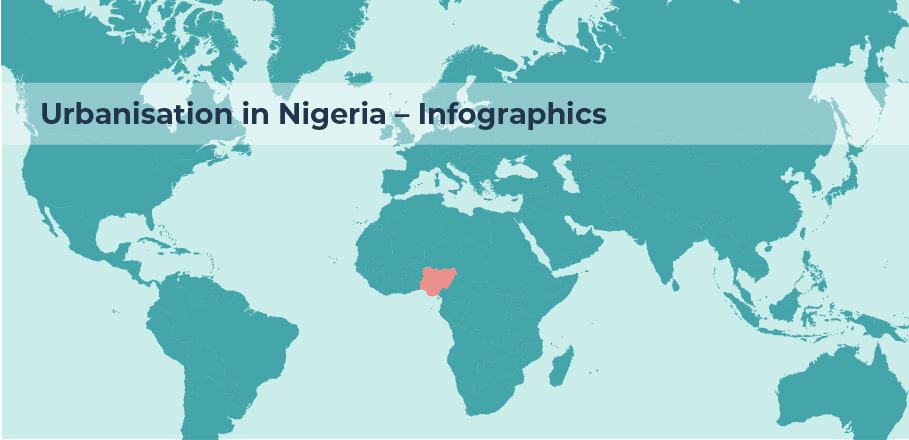Infographics: Urbanisation and Urban Development in Nigeria
URBANET’s latest infographic series with interesting facts and figures about urbanisation in Nigeria.
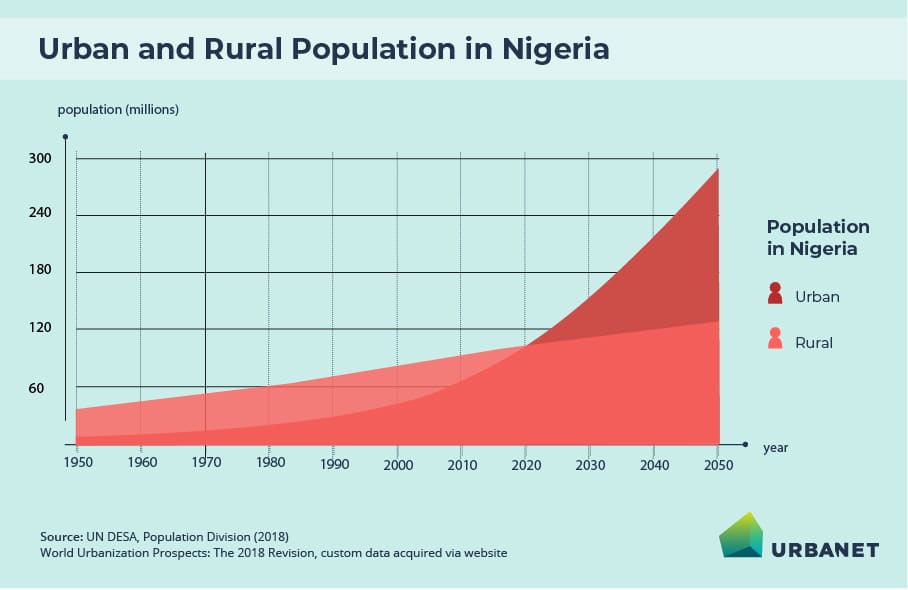
Urbanisation in Nigeria – Urban and Rural Population in Nigerial | Nigeria Infographics © GIZ
The graphic displays the expected linear growth of Nigeria‘s rural population since 1950 until 2050. The urban population has been experiencing a rapid rise since 2010 and is expected to grow from 60 million to almost 300 million inhabitants in Nigerian cities.
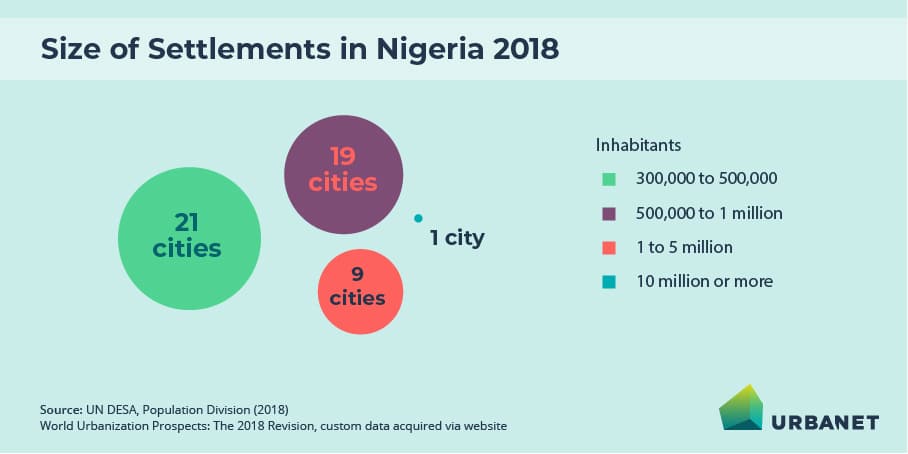
Urbanisation in Nigeria – Size of Settlements in Nigeria | Nigeria Infographics © GIZ
Forty of Nigeria‘s cities have a population between 300,000 and 1 million inhabitants in 2018. There are nine medium-sized cities of a population ranging between one and five million, and only one urban settlement with 10 million or more inhabitants.
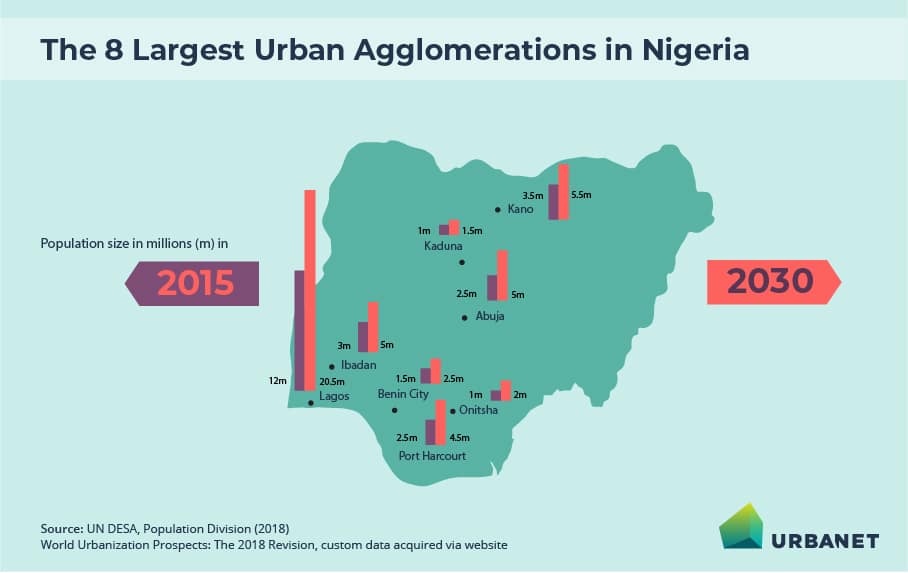
Urbanisation in Nigeria – Largest cities in Nigeria | Nigeria Infographics © GIZ
The eight largest cities in Nigeria will become even bigger until 2030. Prospects suggest that the population growth of Nigeria‘s biggest city Lagos will almost double within the next decade up to 20 million people. Three other cities will also almost double their population.
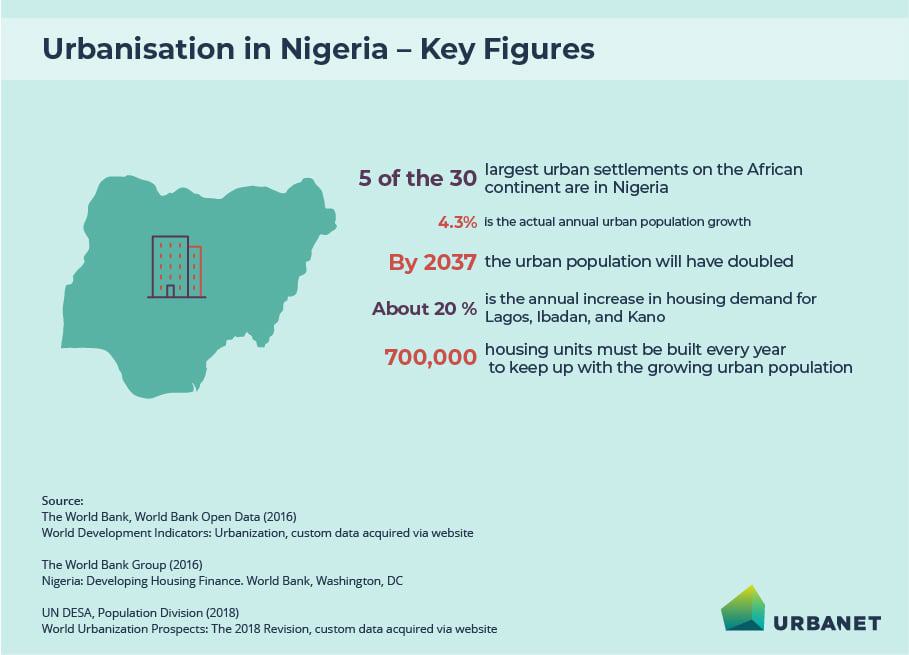
Urbanisation in Nigeria – Key Figures | Nigeria Infographics © GIZ
Urbanisation is already a big factor in Nigeria, with an annual urban population growth of 4.3 per cent and the country hosting five of the 30 largest urban settlements on the African continent. It will play an even more pivotal role by 2037, when the urban population in Nigeria’s cities will have doubled. To keep up with this steady growth, 700,000 housing units must be built every year, with cities like Lagos, Ibadan, and Kano experiencing an annual increase of 20 per cent in housing demand.
